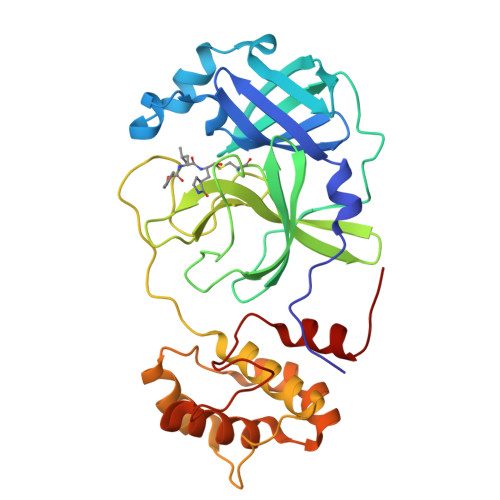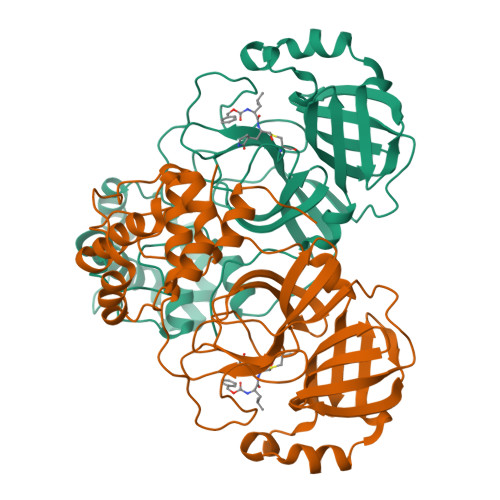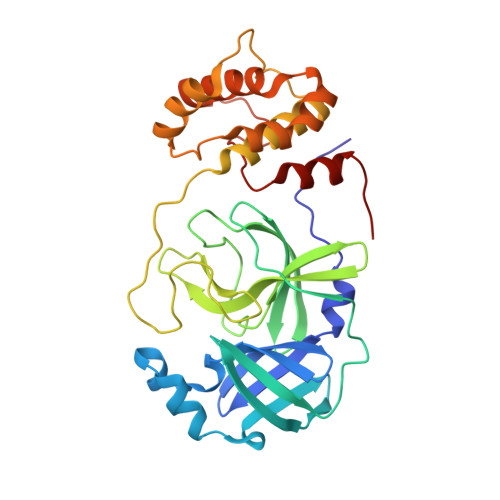A yeast-based system to study SARS-CoV-2 Mpro structure and to identify nirmatrelvir resistant mutations.
Ou, J., Lewandowski, E.M., Hu, Y., Lipinski, A.A., Aljasser, A., Colon-Ascanio, M., Morgan, R.T., Jacobs, L.M.C., Zhang, X., Bikowitz, M.J., Langlais, P.R., Tan, H., Wang, J., Chen, Y., Choy, J.S.(2023) PLoS Pathog 19: e1011592-e1011592
- PubMed: 37651467
- DOI: https://doi.org/10.1371/journal.ppat.1011592
- Primary Citation of Related Structures:
8DDI, 8DDM - PubMed Abstract:
The SARS-CoV-2 main protease (Mpro) is a major therapeutic target. The Mpro inhibitor, nirmatrelvir, is the antiviral component of Paxlovid, an orally available treatment for COVID-19. As Mpro inhibitor use increases, drug resistant mutations will likely emerge. We have established a non-pathogenic system, in which yeast growth serves as an approximation for Mpro activity, enabling rapid identification of mutants with altered enzymatic activity and drug sensitivity. The E166 residue is known to be a potential hot spot for drug resistance and yeast assays identified substitutions which conferred strong nirmatrelvir resistance and others that compromised activity. On the other hand, N142A and the P132H mutation, carried by the Omicron variant, caused little to no change in drug response and activity. Standard enzymatic assays confirmed the yeast results. In turn, we solved the structures of Mpro E166R, and Mpro E166N, providing insights into how arginine may drive drug resistance while asparagine leads to reduced activity. The work presented here will help characterize novel resistant variants of Mpro that may arise as Mpro antivirals become more widely used.
Organizational Affiliation:
Department of Biology, School of Arts and Sciences, The Catholic University of America, Washington, Washington DC, United States of America.

















